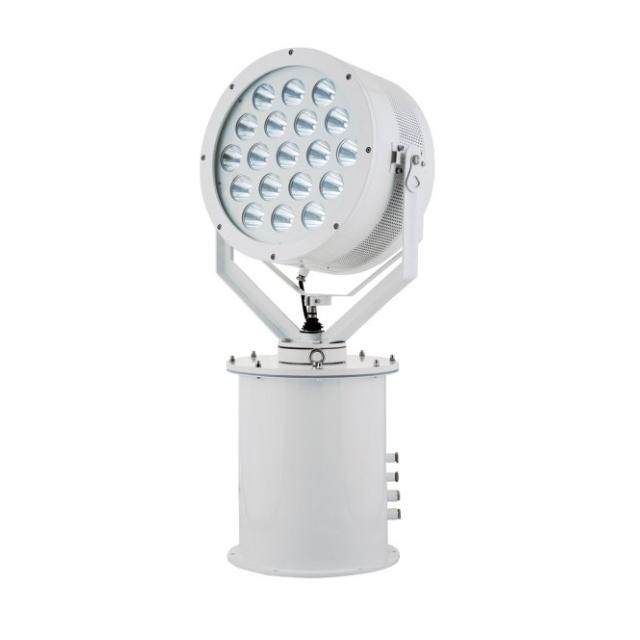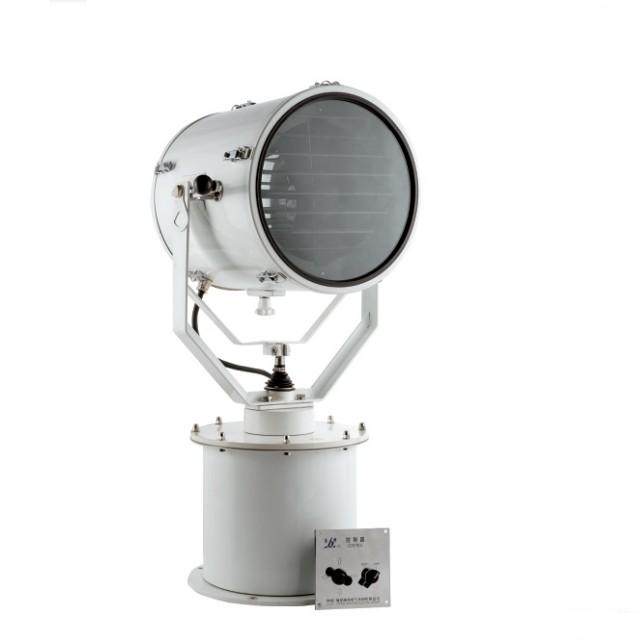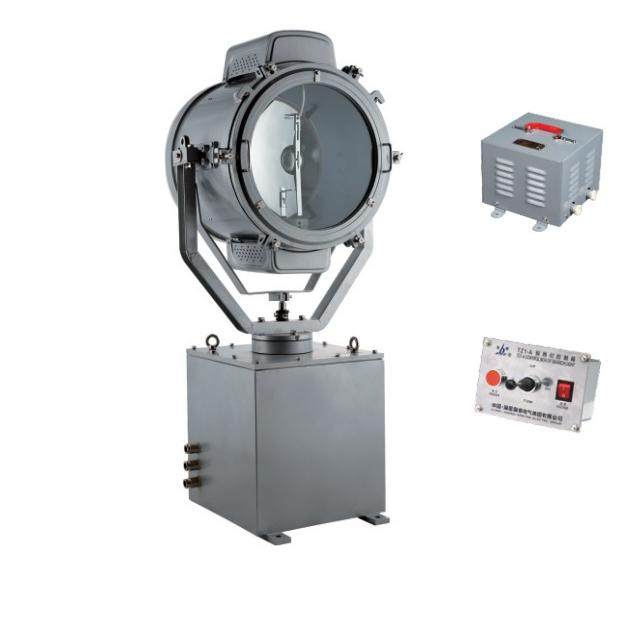The open seas demand precision, safety, and reliable equipment, and among the essential tools for maritime exploration, marine searchlights stand as beacons, piercing through darkness and adverse weather conditions. This article explores the diverse types of marine searchlights, shedding light on their roles in maritime operations and offering guidance on selecting the appropriate type of ship search lights.

Diverse Types of Marine Searchlights:
Spotlights for Precision:
Description: Concentrated, high-intensity lights projecting a beam over a long distance.
Applications: Navigation through intricate channels, aiding in search and rescue operations.
Floodlights for Broad Illumination:
Description: Emitting a broad, even beam, essential for illuminating large areas.
Applications: Deck lighting, emergency response, and night operations in poorly lit areas.
Rotating or Pan-and-Tilt Searchlights:
Description: Dynamic lights with horizontal rotation and vertical tilt for enhanced versatility.
Applications: Surveillance, security patrols, and monitoring specific areas.
Remote-Controlled Searchlights:
Description: Operated from a distance, allowing flexible light direction adjustments.
Applications: Bridge lighting, integration with automated navigation systems.
Infrared (IR) and Thermal Imaging Searchlights:
Description: Operating beyond the visible light spectrum, effective in low-light conditions.
Applications: Night vision capabilities for security, surveillance in areas without visible light.
LED Technology in Marine Searchlights:
Description: Energy-efficient, durable, and long-lasting illumination.
Applications: Contributing to energy savings, extended lifespan reducing maintenance requirements.

Choosing the Suitable Type of Marine Searchlights:
Purpose and Application:
Navigation: Spotlights with a focused beam for intricate channels.
Security and Surveillance: Pan-and-tilt or remote-controlled options for monitoring.
Emergency Response: Versatile floodlights and IR searchlights for visibility.
Visibility Requirements:
Consider range and coverage based on vessel size, intended routes, and operational environment.
Spotlights for long-range visibility, floodlights for broader coverage.
Light Source and Technology:
LED vs. Traditional Bulbs: Consider energy efficiency and lifespan advantages of LED technology.
Infrared and Thermal Imaging: Enhance visibility in low-light conditions for nighttime operations.
Movement and Control:
Rotating or Pan-and-Tilt: Dynamic movement for surveillance or targeted illumination.
Remote-Controlled: Convenience and flexibility for adjusting light direction from a distance.
Durability and Resistance:
Weather Resistance: Choose lights resistant to saltwater corrosion, UV exposure, and extreme weather.
Vibration and Shock Resistance: Ensure operational stability during rough sea conditions.
Regulatory Compliance:
Ensure compliance with maritime regulations and international standards, especially for vessels in international waters.
Power Consumption:
Evaluate power consumption, with LED searchlights known for energy efficiency.

Integration with Navigation Systems:
Choose lights that integrate seamlessly with vessel navigation systems for automated control.
Ease of Maintenance:
Select lights with accessible components for routine inspections and repairs.
LED searchlights may reduce maintenance frequency due to longer lifespans.
Budget Considerations:
Create a budget, balancing cost with required features and functionalities.
Consider long-term costs such as energy efficiency and maintenance requirements.
Conclusion:
Selecting the right type of marine searchlights is paramount for ship operators, given their critical roles in navigation, safety, and emergency response at sea. By considering the vessel's needs, operational nature, and environmental conditions, operators can ensure they have the appropriate searchlights to guide them through the vast and unpredictable maritime environment.









Comments (0)